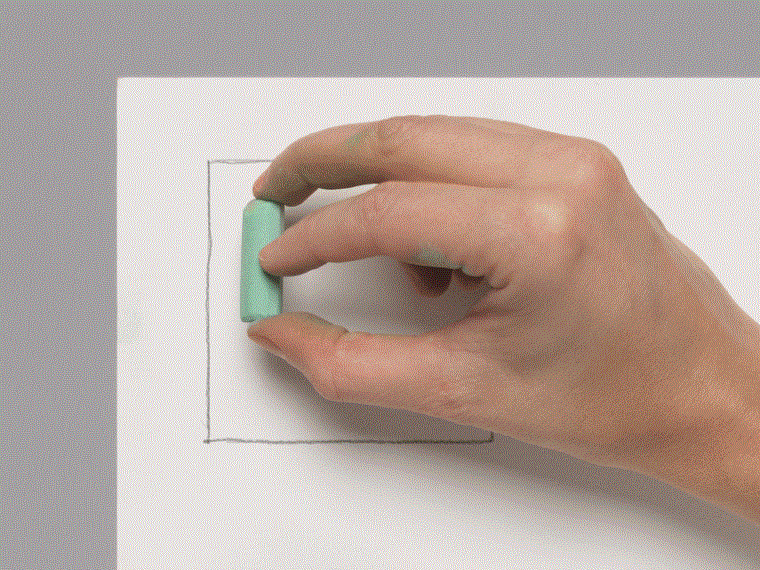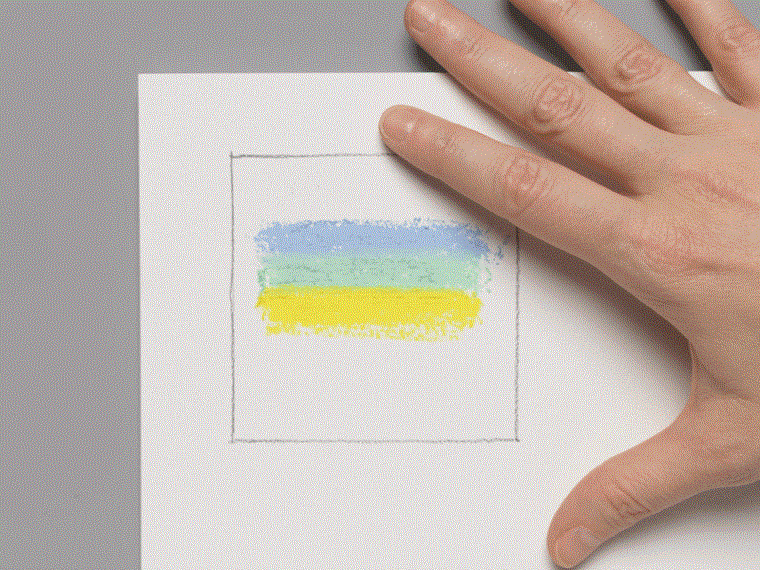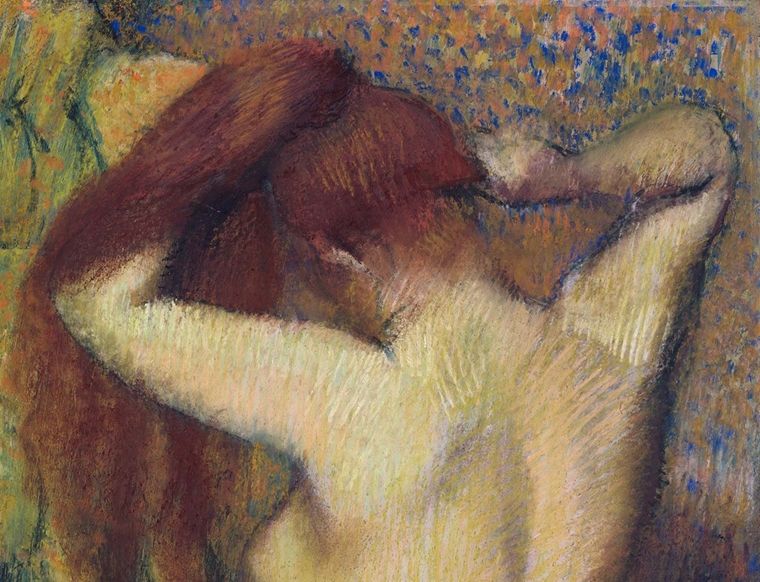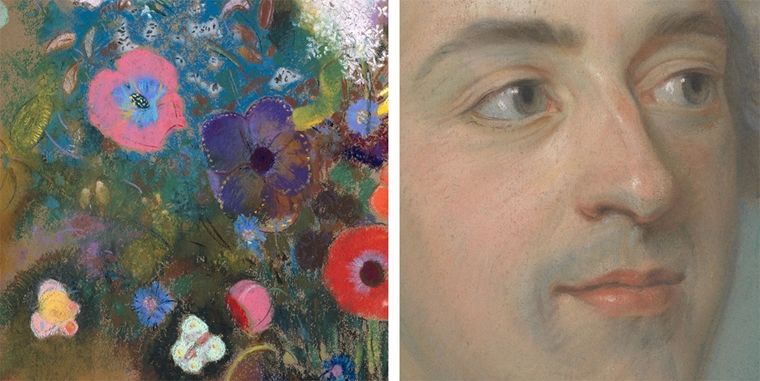
Clockwise from top: box of pastel sticks (crayons), modern pastel pencils, knife, stumps, sponges, powdered pastels
Pastel is fabricated from one or several finely ground pigments, a pulverized inert white filler such as ground calcium carbonate or kaolin, and a minuscule amount of binder such as gum tragacanth. The powdered ingredients are combined and rolled into sticks of colored powder, the consistency of which must be sufficiently cohesive to allow them to be grasped between the fingers, yet crumble when stroked across a support. Pastel is usually drawn on paper, which must have a slight texture or “tooth” to grab and hold the medium on its surface.
Prized for its brilliant color, pastel was first used in the sixteenth century, notably by Leonardo da Vinci. It flourished in the eighteenth century, again in the late nineteenth century, and remains popular today. The optical vibrancy of a work in pastel results both from the absence of yellowing resins in its composition and the reflection of light from the innumerable facets of the finely ground powder. It is an opaque medium and does not depend upon the underlying brightness of the paper to impart luminosity. In the eighteenth century, artists invariably used blue or gray papers because of the slightly coarse texture of such colored sheets.
The medium is available in a variety of forms, including loose powdered pastel and pastel pencils, but most often, pastel is applied directly with the color stick. The broad side, when gently applied, produces areas of light tone revealing the texture of the paper, while more defined, saturated strokes may be achieved using the tip of the stick and applying it with greater pressure.

Pastels may be manipulated in many ways. A painterly effect can be achieved by carefully spreading the powder with a finger or a stump (a soft tool such as a tight coil of paper, leather, or a sponge), or by using a brush.

Pastel may be used as a simple drawing tool for marks and broad passages, such as in this sixteenth-century preparatory work by Jacopo Bassano.

Jacopo Bassano (Jacopo da Ponte) (Italian, 1510-1592). Studies for Scourging a Soldier and the Head of Christ (detail), ca. 1565. Pastel with red chalk on laid light brown paper (formerly blue), 15 1/16 x 9 9/16 in. (38.3 x 24.3 cm). The Metropolitan Museum of Art, New York, Purchase, Lila Acheson Wallace Gift, 1999 (1999.390)
Its use can also be complex. When mixed with water, pastel forms an opaque paint-like substance that may be applied by brush to produce accents and highlights. Artists can further vary the texture by employing a combination of soft and hard pastels in the work of art. As a powder, pastel does not form a solid layer and excessive blending and mixing diminish its brilliance. The richest chromatic effects are achieved by applying marks with individual sticks of color. This accounts for the innumerable ready-made hues and tints common to boxes of pastel. For many artists, this manner of applying color as separate strokes rather than as mixtures provides opportunities to create striking tonal relationships. Edgar Degas, for example, placed strokes of complementary and contrasting hues side by side and interwove them to produce tapestries of color.

Edgar Degas (French, 1834-1917). Woman Combing Her Hair (detail), ca. 1888-90. Pastel on light green wove paper, now discolored to warm gray, affixed to original pulpboard mount, 24 1/8 x 18 1/8 in. (61.3 x 46 cm). The Metropolitan Museum of Art, New York, Gift of Mr. and Mrs. Nate B. Spingold, 1956 (56.231)
Odilon Redon animated the surfaces of his compositions by employing a great diversity of strokes, while Maurice Quentin de La Tour, on the other hand, alternated passages of color and fixative to physically stabilize the underlying layers while allowing evidence of them to remain visible.

Left: Odilon Redon (French, 1840-1916). Bouquet of Flowers (detail), ca. 1900-1905. Pastel on paper, 31 5/8 x 25 1/4 in. (80.3 x 64.1 cm). The Metropolitan Museum of Art, New York, Gift of Mrs. George B. Post, 1956 (56.50). Right: Maurice Quentin de La Tour (French, 1704-1788). Préparation for a Portrait of Louis XV (1710-1774) (detail), ca. 1745. Pastel on blue paper, arched top, 12 7/8 x 9 7/16 in. (32.7 x 24 cm). The Metropolitan Museum of Art, New York, Gift of Mary Tavener Holmes, in honor of Donald Posner, 2005 (2005.66)
Applying fixative to a composition may compress the powder, darken the colors, and diminish the amount of reflected light. For this reason, few artists have employed surface coatings to stabilize pastel. Because they are inherently powdery, pastel drawings are extremely fragile and vulnerable to abrasion and smudging.


